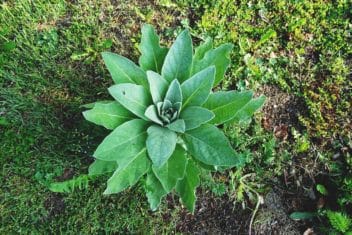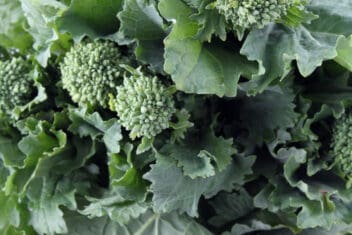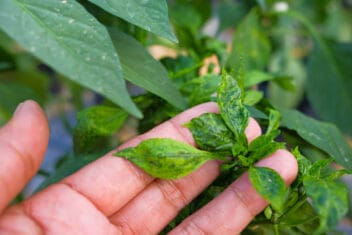The sweet potato has got to be one of my all-time favorite vegetables.
This starchy tuber is equal parts nutrition, dinner, and dessert – I even know people who eat sweet potatoes for breakfast!
From sweet potato fries to sweet potato pie, this versatile vegetable has so many uses in the kitchen.
Despite the love I have for sweet potatoes, I’ve always struggled when it comes to growing them. That’s due in part to the fact that I always mess up the harvesting process.
My vines look great all year long. I’m careful to water, weed, and fertilize – but then, as soon as I start harvesting, everything goes out the window.
Here are some tips for harvesting sweet potatoes so that you can (hopefully) be more successful than I am when it comes to harvesting, curing, and storing these beauties.
Tips for Harvesting Sweet Potatoes
Now that you’ve grown a bumper crop of sweet potatoes, it’s time to get them out of the ground so you can enjoy them. Here’s what you need to know.
1. Get the Timing Right
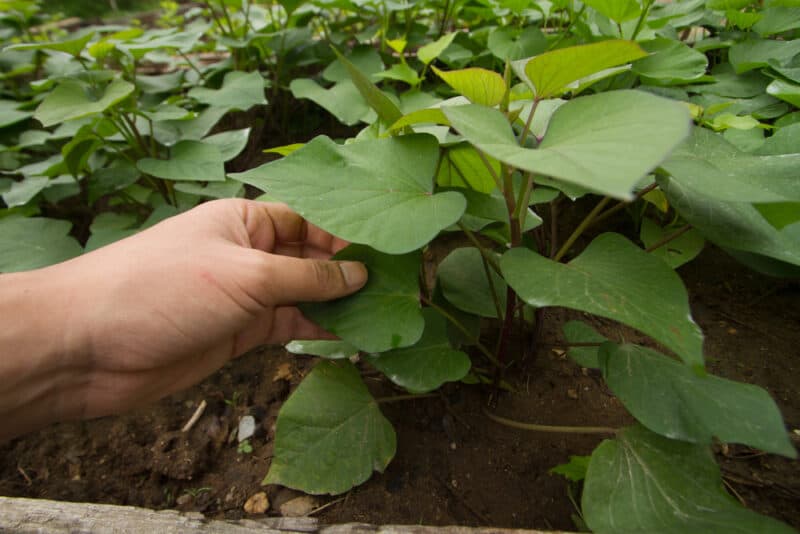
When should you harvest sweet potatoes? The answer to this question can vary depending on where you live and what kinds of conditions you’ve had during the growing season.
If the season has been warm, with lots of water and sunshine, you can generally start harvesting about 100-110 days after you planted the slips.
However, it sometimes takes longer for sweet potatoes to be ready, especially if the conditions haven’t been optimal. Watch for the first signs of yellowing leaves. This is generally in September or early October, just before the first frost.
2. Dealing with Frost
Why before the first frost?
Some people believe that frost won’t affect your harvest. However, it does – and not necessarily in a good way as it does with vegetables like carrots that become sweeter with a tinge of frost.
Although sweet potatoes are somewhat insulated in their location underground, they need to be harvested as soon as the vines turn black with a frost. Otherwise, the decay from the vines will quickly pass to the tubers.
While you don’t need to discard sweet potatoes that were hit by a frost, make sure you harvest within a few days of the colder weather. Sweet potatoes will freeze at 30°.
3. Harvest on a Cloudy Day
Try to harvest your sweet potatoes on a cloudy day or at least one in which the sun isn’t shining too brightly overhead.
Sweet potatoes have thin skins before they are cured. If you let them sit in the sun too long, they can suffer from sunscald. This is kind of like a sweet potato sunburn and it can cause infections to enter.
Of course, you can’t always control the weather. If you have to harvest on a sunny day, just get the sweet potatoes into a shaded location as quickly as you can or cover them up with a blanket or tarp while you harvest the rest.
4. Watch the Skin
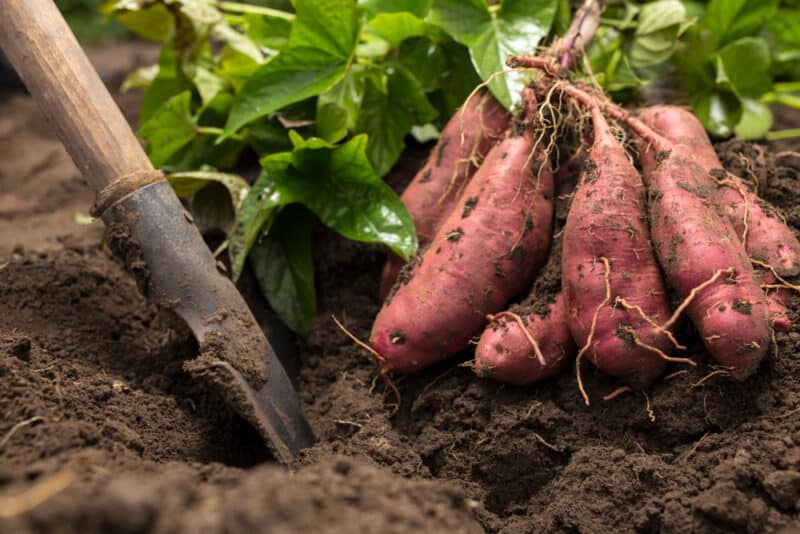
Again, sweet potatoes have very delicate skin. It’s easy to break, tear, or bruise the skin when you’re harvesting, so be careful about how you do it.
This is where I always run amok!
You can use a garden fork or spade to harvest your sweet potatoes but it’s important to sink the tool far enough away from your roots that you are loosening nearby soil instead of digging directly into the plants.
To avoid having to work too close to the soil, mark your planting spot. That way, you’ll know approximately where the sweet potatoes are rather than having to dig willy nilly. The vines can serve as a good indicator but sometimes they can sprawl, so being vigilant in your garden marking is key.
5. Don’t Cut or Bruise
A common misconception is that sweet potatoes heal themselves after being cut or bruised. While it is true that they secrete a milky fluid over the injury, it, unfortunately, does not heal the wound in any way.
A minor bruise or scrape usually will heal during the curing process, but any of those with deeper wounds should be eaten first and not put into storage.
6. Heal Injuries During Curing
Curing is something that can be done for all kinds of winter-stored vegetables, from squashes to sweet potatoes. It helps the harvested veggies recover from any wounds, to release excess moisture, and to ensure that they’ll last longer in storage.
To cure your sweet potatoes, you should let them dry for around 3 or 4 hours. You can leave them outside as long as the weather is dry and not too sunny.
Don’t wait too long during this process, though, especially if you harvest your sweet potatoes in the afternoon and nightfall is approaching. The drop in temperatures and the addition of moisture (from the dew) can damage the sweet potatoes.
Once your sweet potatoes are mostly dry, move them indoors, placing them in a dry, warm, ventilated location. Here they will stay for up to 2 weeks, but at least for a week to 10 days.
Ideally, you will keep your sweet potatoes at temperatures of 80-85°. Some growers put them near a furnace or other heat source to supply the needed warmth. I’ve even used a heat mat (the kind for germinating seeds) before!
Depending on the climate where you live, you might even be able to cure your sweet potato southside. Just make sure you put them on a table and that they aren’t touching so they have enough ventilation.
This resting process helps the skin toughen up and also increases the sugar content. Small injuries may heal up and the entire sweet potato will change color to a deeper, more vibrant orange (for orange sweet potatoes).
7. Don’t Wash Them

Another fatal mistake you can make while harvesting and storing sweet potatoes? Washing them first.
Sure, you’re going to want to get the dirt off your sweet potatoes right before you eat them. However, you should never wash sweet potatoes that are going to be put into storage, as this leads to increased handling and the introduction of more moisture (never a good thing).
Instead, harvested sweet potatoes should move right to the curing process. Here are some more tips for curing sweet potatoes that you might find helpful.
8. Packing Sweet Potatoes for Storage
Once they’ve been cured, you have the green light to go ahead and store your sweet potatoes. Pack them in baskets or boxes and store them in a cool, dry place for the winter. Make sure this spot doesn’t get too much light, as this can affect the shelf light.
Great storage spots for sweet potatoes include:
- A dry basement
- The root cellar
- The garage
- An unused section of the pantry
Don’t store your sweet potato in the refrigerator, as this changes the structure of the cell walls in your potatoes and can cause them to develop a hard center and off-taste. Check your sweet potatoes often for signs of rot and spoilage.
One final tip – before putting your sweet potatoes into storage, you may have to wrap each one in a newspaper. This can provide them with a bit more protection and insulation.
How Long Do Sweet Potatoes Last?

When stored correctly, sweet potatoes should last around 6 months or more – sometimes as long as 10 months!
Just handle them carefully whenever you select one to eat – remember, they bruise easily.
Of course, following the tips above for harvesting sweet potatoes (and these for growing them) should help your sweet potatoes hang on as long as possible, too.
Now, check out these recipes so you have a few ideas on what exactly to do with all those sweet potatoes you’ve stored.

